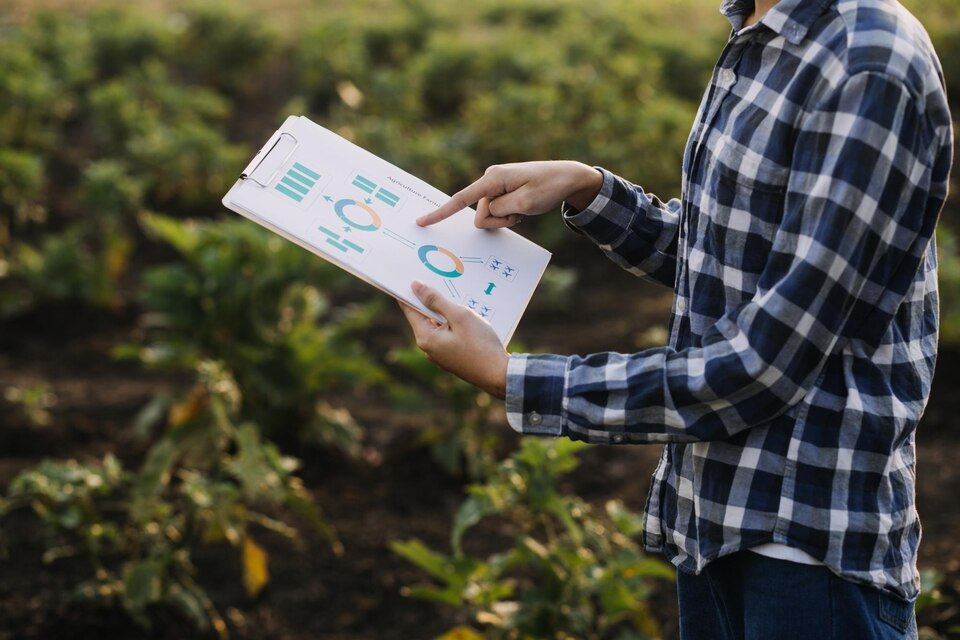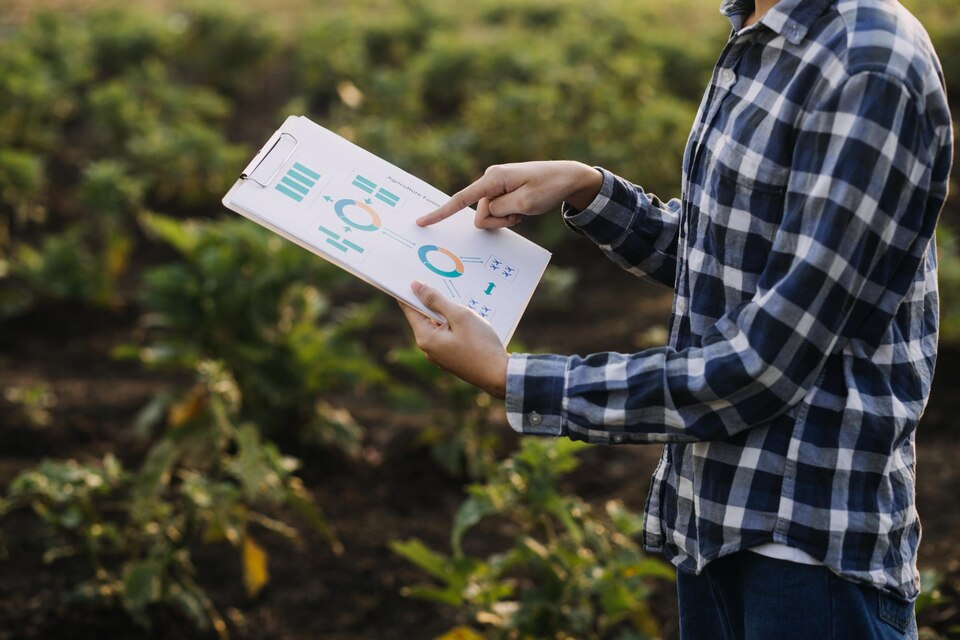
Farmland has long been a cornerstone of wealth creation, offering investors a tangible and historically stable asset. Unlike traditional stocks and bonds, farmland investment provides a hedge against inflation, consistent income potential, and a direct link to one of humanity’s most essential needs—food production. As global populations rise and arable land becomes scarcer, investing in farmland is increasingly seen as a strategic move for long-term financial security.
This guide explores the various ways to invest in farmland, the risks involved, and how to maximize returns. Whether you are an experienced investor or a newcomer looking to diversify your portfolio, understanding the nuances of farmland investment is crucial to making informed decisions.
Understanding Farmland Investment
Farmland investment involves acquiring land for agricultural production, either directly or through investment vehicles that provide exposure to the asset class. Unlike urban real estate, farmland appreciates over time due to limited supply and growing demand for food, biofuels, and other agricultural products.
Historically, farmland has provided steady returns through land appreciation and rental income. It is also less volatile than stock markets, making it an attractive option for risk-averse investors. Additionally, farmland tends to perform well during inflationary periods, as the rising cost of food and commodities increases land values and rental rates.
Investment Methods: Finding the Right Fit

There are multiple ways to invest in farmland, each with its advantages and considerations. Choosing the right approach depends on your capital, risk tolerance, and level of involvement. It's important to evaluate your financial goals, whether you prefer a more hands-on approach or a passive investment, as well as how long you plan to hold the investment to determine which method aligns best with your objectives.
Direct Ownership
Purchasing farmland outright is the most traditional form of investment. This approach allows investors to lease the land to farmers, operate their own farming business, or hold the land for long-term appreciation.
Pros:
- Full control over the investment
- Potential for land appreciation and rental income
- Hedge against inflation
Cons:
- Requires significant capital investment
- Ongoing management responsibilities
- Vulnerability to environmental and market risks
Leasing to Farmers
Leasing farmland to farmers is a popular passive investment strategy. Landowners receive regular rental income without the need to manage farming operations directly.
Pros:
- Steady income stream
- Lower risk compared to active farming
- Minimal management responsibilities
Cons:
- Dependence on tenant farmers' financial stability
- Rental income fluctuations due to market conditions
- Long lease agreements may limit flexibility
Agricultural Investment Funds
Investment funds provide exposure to farmland without the need for direct ownership. These funds pool investor capital to purchase and manage farmland, offering diversification and professional management.
Pros:
- Lower capital requirement than direct ownership
- Professional management reduces investor workload
- Diversification across multiple properties
Cons:
- Management fees reduce net returns
- Limited control over investment decisions
- Potential for lower liquidity compared to other asset classes
Crowdfunding and Fractional Ownership
Technology has made farmland investment more accessible through crowdfunding platforms. These platforms allow investors to buy fractional ownership in farmland, lowering the barrier to entry.
Pros:
- Low minimum investment requirements
- Access to high-quality farmland
- Potential for capital appreciation and rental income
Cons:
- Limited liquidity
- Platform fees may impact returns
- Less control over specific properties
Real Estate Investment Trusts (REITs) and Public Market Options
Farmland REITs and publicly traded agribusiness stocks allow investors to gain exposure to farmland without direct ownership. These options provide liquidity and diversification through the stock market.
Pros:
- Easily bought and sold on public exchanges
- Exposure to agricultural assets without direct management
- Dividend income from rental earnings
Cons:
- Higher volatility due to stock market fluctuations
- Potential for lower returns compared to direct farmland ownership
- Limited control over specific assets
Key Risks and Challenges in Farmland Investment

While farmland investment offers attractive benefits such as stable returns and portfolio diversification, it also comes with inherent risks that must be carefully evaluated. Understanding these challenges is essential to making informed investment decisions and developing strategies to mitigate potential downsides.
Market Volatility
Farmland values and agricultural profitability are directly influenced by fluctuations in crop prices. These prices depend on global supply and demand, weather patterns, geopolitical events, and commodity market trends. A sudden drop in the price of key crops, such as corn, wheat, or soybeans, can significantly impact a farm’s revenue, affecting both landowners and tenant farmers. Additionally, global trade disputes, tariffs, and export restrictions can create instability in agricultural markets, further influencing returns.
Environmental Factors
Farmland is highly dependent on environmental conditions, making it vulnerable to climate-related risks. Droughts, floods, hurricanes, wildfires, and unpredictable weather patterns can reduce crop yields and overall land productivity. Soil degradation, erosion, and loss of biodiversity can further impact long-term farmland value. Investors must consider water availability, irrigation systems, and soil conservation practices to minimize environmental risks and ensure sustainable agricultural production.
Regulatory and Policy Changes
Government policies play a significant role in farmland investment, affecting everything from subsidies and taxation to land-use restrictions and environmental regulations. Changes in agricultural subsidies can alter farm profitability while shifting trade agreements and tariffs can impact export opportunities. Additionally, zoning laws and land-use regulations may limit the types of farming activities allowed on a property, affecting an investor’s ability to develop or repurpose the land. Staying informed on regulatory trends and working with legal experts can help investors navigate these complexities.
Liquidity Concerns
Unlike publicly traded stocks or real estate investment trusts (REITs), direct farmland ownership is relatively illiquid. Selling a farmland property can take months or even years, depending on market conditions and the availability of buyers. This lack of liquidity means that investors must be prepared for long holding periods and may not have quick access to their capital. Those seeking more flexible investment options may prefer farmland funds, REITs, or crowdfunding platforms, which offer easier entry and exit strategies.
Management Complexity
Investing in farmland requires ongoing management, especially for those who directly own and operate the land. Investors must handle tenant relations, negotiate lease agreements, maintain infrastructure, and ensure sustainable land use. Even passive investors who lease their land to farmers must monitor tenant performance, enforce lease terms, and address potential disputes. Poor management can lead to declining land value, reduced rental income, and unexpected costs. For those without agricultural experience, hiring professional farm managers or partnering with established operators may be necessary to ensure a profitable investment.
Mitigating Risks
To address these challenges, farmland investors should conduct thorough due diligence, diversify their holdings, and consider risk management strategies such as crop insurance, sustainability practices, and legal safeguards. By understanding and proactively addressing these risks, investors can maximize the long-term value and profitability of their farmland investments.
Before investing in farmland, conducting thorough due diligence is essential. A well-informed decision can help maximize returns and minimize risks. Key factors to assess include:
- Location: The geographic location of farmland significantly impacts its value and profitability. Farmland in high-demand regions with access to water, transportation infrastructure, and agricultural markets tends to appreciate more over time. Proximity to grain elevators, processing plants, and transportation hubs can lower costs and increase efficiency for farming operations. Additionally, consider climate conditions and long-term weather patterns, as these can affect crop viability.
- Soil Quality: The productivity of farmland largely depends on soil health. Conducting soil tests helps determine fertility levels, drainage capacity, and the presence of essential nutrients. Good soil quality leads to higher yields, making the land more valuable for both investors and tenant farmers. Factors like soil composition, erosion potential, and pH levels should be assessed before investing.
- Historical Yield Performance: Reviewing past crop production data provides insights into the farmland's potential profitability. A strong history of consistent yields suggests stable and productive soil, while inconsistent or declining yields may indicate underlying issues such as soil degradation, poor water retention, or pest infestations. Investors should request detailed records from previous owners or tenants to evaluate the farm’s performance.
- Market Trends: Agricultural markets are dynamic, with commodity prices fluctuating based on global supply and demand. Analyzing market trends helps investors determine which crops are most profitable and in high demand. Some regions specialize in specific crops due to climate and soil conditions, and understanding these trends can provide a competitive advantage. Diversification options, such as organic farming or specialty crops, may also be worth exploring.
- Water Rights and Access: Water availability is a critical factor in farmland investment. Even high-quality land may struggle to remain productive without a reliable water source. Investors should examine water rights, irrigation infrastructure, and the long-term sustainability of water access. Climate change and shifting regulations on water usage could impact a farm’s productivity, making it essential to secure a stable and legal water supply.
- Tenant Farmer Stability: If the investment strategy involves leasing farmland to tenant farmers, it’s important to assess the financial health and reliability of potential tenants. A strong and experienced tenant will ensure steady rental income and proper land management. Investors should review tenant creditworthiness, farming experience, and lease agreements to mitigate the risk of tenant defaults or mismanagement.
Investors should also consult agricultural experts, real estate professionals, and legal advisors to ensure a sound investment decision. Working with agronomists for soil testing, financial analysts for market assessment, and legal advisors for reviewing land contracts can help reduce investment risks and improve long-term returns.
Future Trends and Opportunities in Farmland Investment

The agricultural sector is evolving, creating new opportunities and challenges for farmland investors.
1. Technological Advancements
Precision farming, automation, and data analytics are transforming agriculture, improving efficiency and productivity. Investors who adopt technology-driven approaches may gain a competitive edge.
2. Sustainable and Organic Farming
Consumer demand for organic and sustainably grown food is rising. Investing in farmland that supports regenerative agriculture practices can yield higher profits and align with environmental goals.
3. Climate-Resilient Crops and Practices
As climate change impacts farming, investment in resilient crop varieties and adaptive farming techniques is crucial for long-term sustainability.
4. Global Population Growth and Food Security
By 2050, the global population is projected to exceed nine billion, driving demand for agricultural products. Farmland investors who position themselves strategically can benefit from long-term growth trends.
5. Government Incentives and Policy Changes
Many governments offer incentives for farmland conservation, water efficiency, and renewable energy projects on agricultural land. Staying informed on policy shifts can open up new investment opportunities.
Final Thoughts
Investing in farmland is a powerful way to build long-term wealth, diversify a portfolio, and contribute to food security. There are numerous ways to gain exposure to this asset class, whether through direct ownership, leasing, investment funds, or publicly traded options.
However, like any investment, farmland comes with risks that require careful analysis. Understanding market dynamics, evaluating land quality, and staying ahead of industry trends can help investors maximize returns while mitigating potential downsides.
Farmland can be a resilient and profitable addition to any portfolio by taking a strategic approach and leveraging the right investment method.

Get a no-obligation offer in just a few minutes.





.webp)




.webp)
